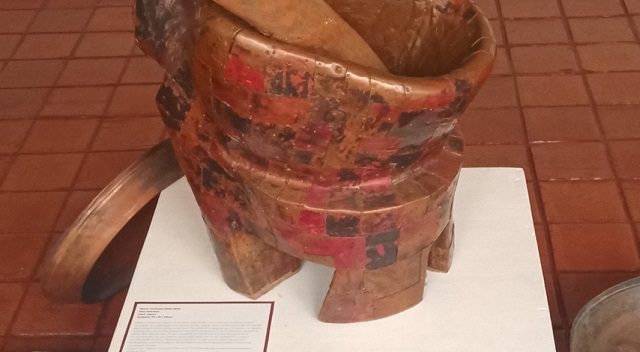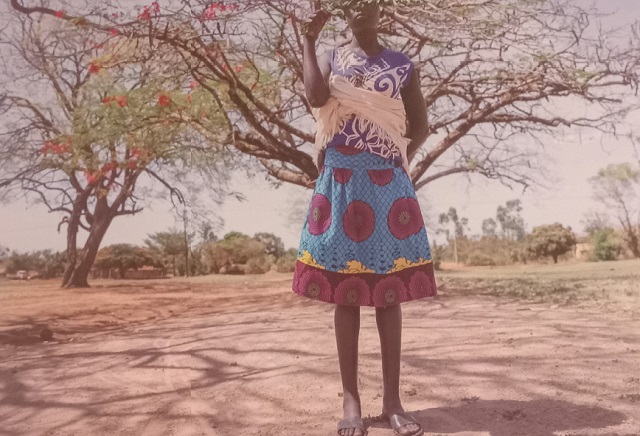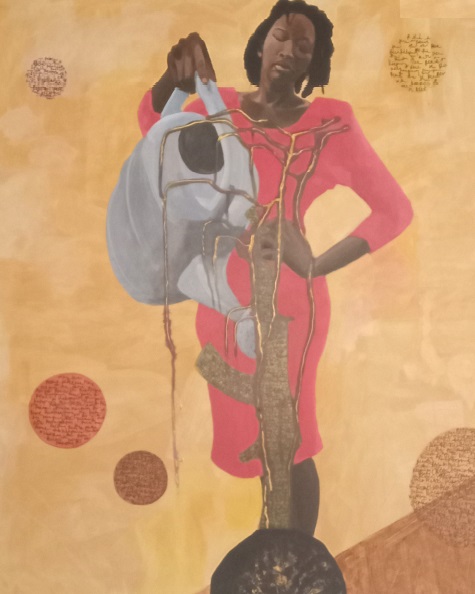
How legitimate is the gender card in Art and why not art that answers the So What question?
| DOMINIC MUWANGUZI | The exhibition Njabala This Is Not How that recently opened at Makerere Art gallery within the University campus, is about women. It explores and examines the diverse social- cultural experiences or limitations of the woman in her immediate surroundings both in the past and present. Its showcase of multidisciplinary art including painting, installation, sculpture, film and sound art is an allusion to the diversity in artistic approach by the woman artist in contemporary times. Yet, the same approach insinuates the wide raging artistic capabilities of the woman in an industry that is a largely dominated by men. Conversely, the exhibition is contextualized in the women empowerment movement with its advocacy for the woman’s voice in society. This comes on the heels of a socially and culturally prejudiced society that continuously ‘glorifies’ silence of women on issues that effect them. In all this, the exhibition is seeking to be relevant and timely in a month were renewed attention is geared to the women’s fragility and vulnerability.
 In its attempt to create awareness to the prejudice faced by the woman artist and her contemporary outside the art environment, the exhibition nonetheless invites a critical review of the woman empowerment discourse. The narrative that women are stereotyped in society and therefore need a special platform to address their vulnerability needs to be questioned. How legitimate is it when since pre-historical times women like men have always had there roles clear cut for them in society? How true is it that women have been excluded from creative practices yet traditionally women performed vital roles in the household setting? Traditionally, women were at the fore front of activities like basket weaving, pottery, decoration and building of shelters. In the contemporary society, women participation in art making has continued to be visible; although often overshadowed by the numbers of male artists. Nonetheless, this has not hindered “women artists” on the local art scene like Maria Naita, Rose Kirumira and Theresa Musoke to compete favourably in the industry.
In its attempt to create awareness to the prejudice faced by the woman artist and her contemporary outside the art environment, the exhibition nonetheless invites a critical review of the woman empowerment discourse. The narrative that women are stereotyped in society and therefore need a special platform to address their vulnerability needs to be questioned. How legitimate is it when since pre-historical times women like men have always had there roles clear cut for them in society? How true is it that women have been excluded from creative practices yet traditionally women performed vital roles in the household setting? Traditionally, women were at the fore front of activities like basket weaving, pottery, decoration and building of shelters. In the contemporary society, women participation in art making has continued to be visible; although often overshadowed by the numbers of male artists. Nonetheless, this has not hindered “women artists” on the local art scene like Maria Naita, Rose Kirumira and Theresa Musoke to compete favourably in the industry.
The phrase “women artist” here also seems to be awkward although often used to evoke the fragility and vulnerability of women in the art industry. By identifying with the phrase, it ironically implies that any woman in the art industry has accepted the stereotypical tendencies attached to their identity. Yet such a term should ideally be used to claim for legitimacy in an industry that allegedly offers few opportunities for the women. The idea that women who are agitating for their equal rights in art, are again implicitly accenting to their marginalization through endorsing the phrase women artist, is in every sense of the word confusing. More to this, is the self-limiting aspect that is often associated with the identity of women artists. Seldom do women artists explore beyond what lies on the horizon. They create art within their comfort zone and by doing so, they become predictable to their audience. It was obvious that the exhibiting artists in the group show Njabala, would explore subjects of feminity and womanhood with little or no attempt to answer the question: So What?
 This was another hiccup of the exhibition which had been anticipated to create a precedent in group exhibitions in Kampala. The exhibition curator, Martha Kazungu should have invited artists to create artworks that are specifically outside their routine comfort zone, but still on the theme of Memory, Love, Womanhood and Activism. It was not enough that artists displayed multidisciplinary art or worked with new media like photography and film. The question that begged to be answered in this “experimental” artistic undertaking, is that how these do images impact the lives of the audience as they encounter them in and outside the exhibition space?
This was another hiccup of the exhibition which had been anticipated to create a precedent in group exhibitions in Kampala. The exhibition curator, Martha Kazungu should have invited artists to create artworks that are specifically outside their routine comfort zone, but still on the theme of Memory, Love, Womanhood and Activism. It was not enough that artists displayed multidisciplinary art or worked with new media like photography and film. The question that begged to be answered in this “experimental” artistic undertaking, is that how these do images impact the lives of the audience as they encounter them in and outside the exhibition space?
The curator with no doubt presents a brilliant story of “re-enacting a revised contemporary function of Njabala’s mother in Njabala folklore” through the selection of artists she worked with, with different cultural backgrounds and experiences. But the artists’ works including, Bathsheba Okwenje’s photographs or Pamela Enyonu’s paintings are unforgivably mute within the context of the exhibition that seeks to “use art to speak to repressive roles and rules of living for women.” The artists simply state the problem but do not solve it. Otherwise, the curator should have been part of the production process of the work for the exhibition. It can be guessed therefore that there was limited time used to organize and prepare for the exhibition or the curator took on the risk of working with already produced artworks for this show. Both factors have the disadvantage of weakening the exhibition in the face of its highly anticipated success.
Women Movements are highly successful when they embrace the younger generation of women in society. The young women are both vibrant and energetic to challenge the traditional barriers encountered by the women in their everyday living. As such, the mounting of the exhibition at Makerere is a convenient space to nurture this narrative of activism. But while the Njabala Foundation and its fledging child Njabala This Is Not How exhibition, are conceived to add a voice to the plight of women in society, questions abound if both mother and child will stand the taste of time or if their true relevance will be understood by young and old like the Njabala folklore?
****
The exhibition features works by Pamela Enyonu, Sandra Ssubi, Bathsheba Okwenje, Sandra Nansubuga, Miriam Watsemba, Lilian Nabulime, Immy Mali and Esteri Tebandeke
 The Independent Uganda: You get the Truth we Pay the Price
The Independent Uganda: You get the Truth we Pay the Price




Brilliant piece and i Think we have met before while at makerere art gallery and talked briefly about the issue of contorversy.
am Writting an essay personally abaout the exhibition as am drawn to the issue of categorising in reference to a time/period where the talk of representation and inclusion has / is a significant factor socially.
Glad to have someone i can relate to basing on how we both view the exhibition, its purpose and future thematic goals.
Semaganda Joshua Victor is my name, am a freelance Documentary photographer and Visual artist based in Uganda and currently pursuing my Masters degree in Fine art at the Margret Trowel School of Industrial and fine art. I Hope to keep in touch with you and i will be glad to hear from you soon.